Wildflowers, Grasses and Other Nonwoody Plants
Media
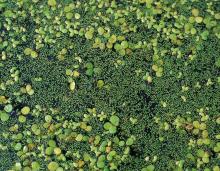
Species Types
Scientific Name
Lemna spp.; Spirodella spp.; Wolffia spp.
Description
Duckweeds are the smallest of the flowering plants. They consist of tiny, green, round, leaflike bodies that float on the water’s surface. They are an important food for waterfowl.
Media

Species Types
Scientific Name
Phytolacca americana
Description
A tall, smooth, branching plant with red stems and juicy, dark purple berries, pokeweed is both toxic and a traditional edible potherb called poke salat. It is common statewide.
Media

Species Types
Scientific Name
Hemerocallis fulva
Description
Native to Europe and Asia, orange day lily was widely planted by early settlers and has become widely naturalized in North America. The seeds don't mature in Missouri, so all the plants here are spread by root divisions.
Media

Species Types
Scientific Name
Lilium michiganense
Description
This native lily looks a lot like the Asian “tiger lily” that is commonly cultivated in gardens. Michigan lily, however, has leaves mostly in whorls and lacks the round “bulblets” that tiger lily forms in its leaf axils.
Media

Species Types
Scientific Name
Commelina communis
Description
The flowers of dayflower are truly blue, and they have only two conspicuous petals. A fast-growing, sprawling, but shallow-rooted weed, this introduced species commonly annoys gardeners.
Media
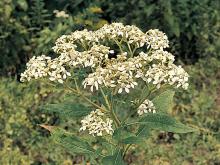
Species Types
Scientific Name
Verbesina virginica
Description
White crownbeard is a tall native perennial wildflower with clusters of white flowerheads. It's called “wingstem” for the narrow green wings running along the stem. It’s called “frostweed” because it forms "frost flowers": strange and beautiful formations at the stem bases after a sudden hard frost.
Media
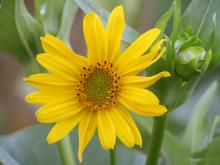
Species Types
Scientific Name
Silphium perfoliatum
Description
Called carpenter’s weed for its remarkably square stems, cup plant is also notable for its large, opposite leaves that fuse around the stem to form a leafy cup that holds rainwater.
Media

Species Types
Scientific Name
Silphium terebinthinaceum
Description
Of Missouri’s six rosinweeds, prairie dock is identified by its large, leathery, unlobed leaves, which are nearly all in a basal whorl. Only a few small leaves grow on the stem.
Media
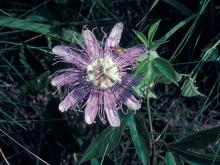
Species Types
Scientific Name
Passiflora incarnata
Description
The bizarre, complicated flowers attract attention! The fruits are edible. Passion flower is a nonwoody vine that climbs via tendrils on trees or other structures. It is native to the southeastern United States, including southern Missouri.
Media
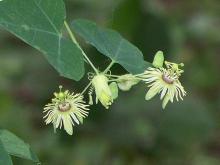
Species Types
Scientific Name
Passiflora lutea
Description
Yellow passion flower is the smaller of Missouri’s two Passiflora species. Both are vines that climb via tendrils. This one has yellowish-green flowers about an inch wide. Look for it along and south of the Missouri River.
See Also
About Wildflowers, Grasses and Other Nonwoody Plants in Missouri
A very simple way of thinking about the green world is to divide the vascular plants into two groups: woody and nonwoody (or herbaceous). But this is an artificial division; many plant families include some species that are woody and some that are not. The diversity of nonwoody vascular plants is staggering! Think of all the ferns, grasses, sedges, lilies, peas, sunflowers, nightshades, milkweeds, mustards, mints, and mallows — weeds and wildflowers — and many more!





















